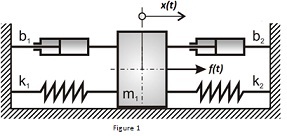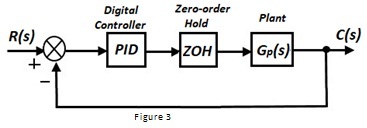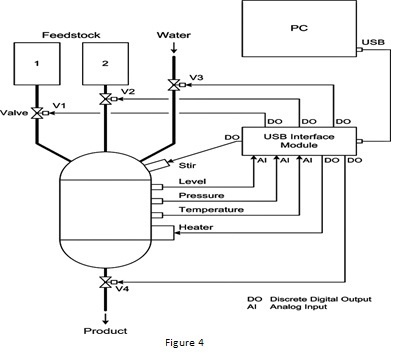Module Learning Outcomes - The following LOs are achieved by the student by completing the assignment successfully
1. Demonstrate an appreciation of the classical and modern approach to digital control systems and practical implementation of the sampling process.
2. Apply the z transform methodology to sampled data systems to implement control strategies for computer control.
3. Assess the operation of instrumentation sensors and transducers in current use for a range of applications.
Assignment Objective - This will enable each student evaluate, analyze and design control and instrumentation related to and engineering scenario. This assessment will develop student's analytical and critical thinking and problem solving skills.
Assignment Tasks - Answer all questions.
Task 1: A certain dynamic system structure has an equivalent block diagram shown in figure 1. The given parameters are mass is 6 Kg, damping factors b1 = 9 N-s/m and b2 = 15 N-s/m, and the spring constants k1 = 10 N/m and k2 = 8 N/m. Base on this diagram, determine the following.
i. Ordinary differential equation representing the dynamic;
ii. Convert the differential equation into a State Space equation. Consider displacement as the output.

Task 2:
a. Multiple input-multiple output systems use state space representation to define the parametric interrelationship between inputs and outputs. Determine the controllability of the control system represented by the state space equation in figure 2 and justify your answer.

b. A recursive Infinite Impulse Response (IIR) filter output is given by y(n) = 3x(n)+2x(n-1)+3x(n-2)+2x(n-3)+x(n-4)+3y(n-1)+2y(n-2). Using basic building blocks, sketch the block diagram representation of the discrete-time system described by the input-output relation.
Task 3: A certain plant function has a transfer function of Gp(s) = 9/(s+3)(s+6). If the zero-order hold has a transfer function Gzoh = (1-e(-Ts))/s determine the following.

i. Determine whether the given sampling of 0.15 second is satisfactory;
ii. The z-transform G(z) of the cascaded Gp(s) and Gzoh.
Task 4: As a control engineer, you are tasked to enhance the performance of an analog plant using a digital controller PID. The controller is in connected in series with the plant in a closed-loop configuration. The pulse transfer function is given as GzohGp(s) = (12(z+0.66))/(z-0.55)(z-0.45). Use sampling time as 0.3 second.
i. You are requirement to make the settling time of 2.5 seconds and damping ratio of zeta = 0.6. To meet these requirements, calculate the angle contribution of the digital controller (PID);
ii. Design a PID controller by determining its transfer function to meet the angle contribution calculated in (i). Use two identical PID controller-zeroes.
Task 5: For the given Process and Instrumentation Diagram (P&ID) of a chemical process system in figure 4:

i. Discuss the Control system aspect and instrumentation component functionalities of the system presented in the diagram.
ii. Identify and discuss the inputs and outputs of the interface module.
You must always count on our Control and Instrumentation Assignment Help service for top-notch grades, without putting your hands into the monotonous job of researching and composing of the assignment paper.
Tags: Control and Instrumentation Assignment Help, Control and Instrumentation Homework Help, Control and Instrumentation Coursework, Control and Instrumentation Solved Assignments, Digital Control Systems Assignment Help, Digital Control Systems Homework Help